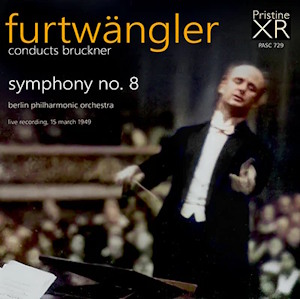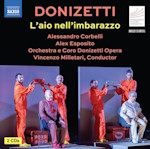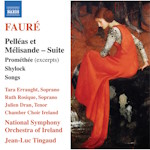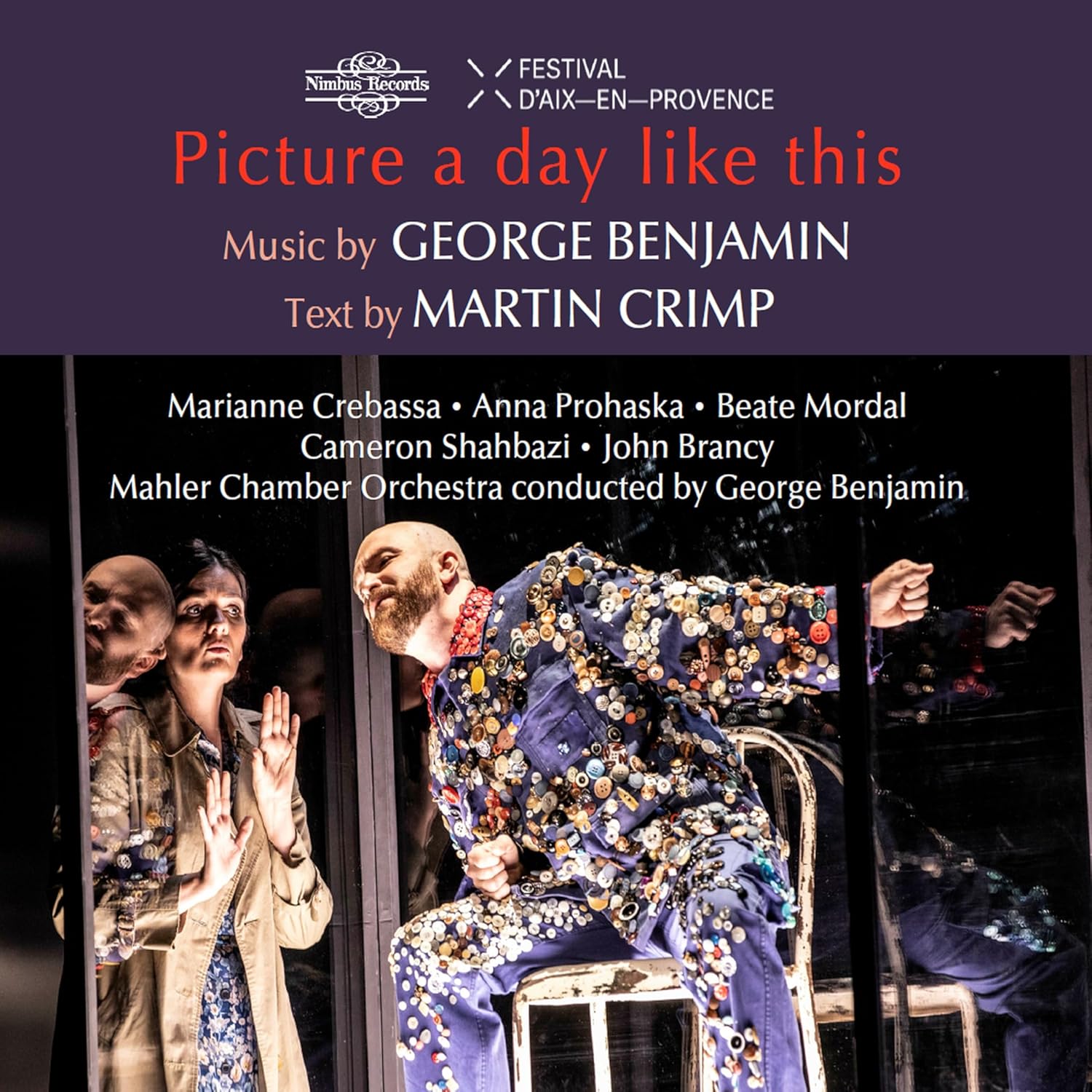
Anton Bruckner (1824-1896)
Symphony No. 8 in C minor
Berlin Philharmonic Orchestra/Wilhelm Furtwängler
rec. live, 15 Mar 1949, Titania Palast, Berlin
Pristine Audio PASC 729 [76]
There are probably four Furtwängler performances of this symphony which have been preserved: Vienna October 1944, Berlin 14 and 15 March 1949, and Vienna 1954. The Vienna 1944 performance has been widely issued on many labels, and the Berlin 15 March 1949 on a lesser number of occasions because of various problems. For some reason, the Berlin 14 March 1949 performance (which I have never heard) has had very few issues, and it would be a great service if Pristine could add this to their Furtwängler stable. The final performance is from Vienna in April 1954, less than a year before the conductor’s death, and there is still controversy about whether this is actually conducted by Furtwängler or by Knappertsbusch. It is markedly slower than any of the other Furtwängler performances. However it is included in Orfeo’s complete set of Furtwängler’s live recordings with the VPO (C 834 118Y), which lends weight to its authenticity.
The legendary 1944 performance, recorded in the days when it was becoming increasingly clear that Germany was going to be defeated, has, like so many of Furtwängler’s wartime recordings, an intensity and a desperation to communicate the power of the true German spirit which is unsurpassed. A stopwatch is a very crude tool for assessing the quality of a performance, but after the first movements, whose timings are within ten seconds of each other, the 1944 performance is slower than the 1949 by about three minutes over the last three movements. This may seem comparatively slight over a span of around 60 minutes, but the difference is significant and, to me, vital in weighing up the two performances.
In the first movement the feel is, perhaps unexpectedly, more overtly excitable in 1949. Some of the accelerandi are more extreme, for example at 13 minutes into the movement, but the impression left is less, rather than more, dramatic, and the great strings and brass climax into which it leads has nowhere near the cataclysmic, existential panic of 1944. It must be admitted, however, that this is undoubtedly partly because the 1949 recording is incapable of conveying what the orchestra is doing, while the 1944 is astonishingly vivid and powerful for its date.
The 1949 Scherzo is a performance of great excitement, a powerful momentum and a sense of exhilaration which would probably have been an emotional impossibility in 1944. The Trio has a more light-hearted feel in 1949; in 1944 the effect is of nostalgia for vanished joy.
The differences in the two slow movements follow the same pattern. The 1944 performance is two minutes longer than in 1949, which adds hugely to its effectiveness, and the detail has greater characterisation. Listen to the cellos’ response to the horn call 5.00 minutes into the movement; it has an extraordinary intensity and yearning, which was not quite matched in 1949. Similarly the brass chorale beginning at 6.29 is just slightly too fast in 1949, missing out on 1944’s depth of utterance. The great final climax of the movement, beginning at 19.09, where the last hope of resolution is so heart-rendingly ripped away from us, is unfortunately badly let down by the recording, but I think that even if it had not been, it would not have equalled 1944. The stunned silence between the climactic discord and the lamenting string reaction is too short. The coda’s mixture of sorrow moving to acceptance is very finely done, but (I’m sorry to be so boringly repetitive) 1944 takes the palm.
The Finale is the movement which responds best to 1949’s approach. The more triumphant feel to this performance is an entirely convincing and logical response to the music, but personally I find the sense of an acceptance rather than a victory in 1944 the more moving. It will be by now pretty clear that my own preference is definitely for 1944, but I should say that this opinion is not shared by everyone. In Alan Sanders’ review of the issue on Harmonia Mundi (CD-624) in Gramophone September 1990 he says “Furtwängler shines at his most remarkable, inspirational best, more so I feel than in the earlier Vienna [1944] version”. Whichever you prefer, there is no doubt that this 1949 performance is a great one.
Many of you will be particularly interested in what Pristine has been able to accomplish with regard to the recorded sound. As I mentioned earlier, the 1949 performance is beset with sonic problems. The actual recording quality is not a patch on the best that was possible at that date, and the additional complication of an exceptionally bronchial audience and the sound of the planes delivering supplies during the Berlin Airlift really do not help in making listening an easy experience. The only other issue I have is that in the Audite “Furtwängler Complete RIAS Recordings” box (Audite 21.403 review), which were the first issues to be taken directly from the original radio tapes, so my previous experience of the recording is from the best-sounding issue then available. I would imagine that many of the earlier issues of this performance were significantly inferior in sound quality, and have resulted in its reputation as being almost unlistenable. In his notes, Andrew Rose quotes from Alan Sanders’ review mentioned above: “As to the complexities of the [finale’s] coda, well, they disappear into a foggy din”. The drone of the Berlin Airlift planes is still clearly to be heard, but I would actually regret its removal – this was a significant event in 20th century history, and the recording allows us almost to touch it, so to speak. Andrew Rose has been able to make some improvement in the coughing and spluttering of the Berlin audience, but of course these are at their most noticeable in the quiet moments with delicate orchestration, which are precisely where it is most difficult to “cut them out” without taking the music out too. There is only so much that can be done with present day technology to improve the matter – though who knows what AI may be able to achieve, even in the comparatively near future.
Andrew Rose has made an excellent job of his transfer. There were sections of the work where woodwind phrases were largely lost in the general sound, even on the Audite issue, but which somehow Rose has managed to bring to the surface. The general sound is richer than Audite’s and, for example, the sonority of tone of the cellos at the start of the work is remarkable and the vividness and clarity of the woodwind is very impressive. He has made some considerable improvement in clarifying the clotted texture when the orchestra is going full tilt and the texture is complex (especially when it is underpinned by timpani rolls). The very end of the work is no longer just a “foggy din”, but, as with the coughing, there is only so much that present technology can do. However, I do think it only fair to say that the difference between Pristine and Audite transfers is not chalk and cheese. If you have the Audite box, there is probably no pressing need to acquire this issue, but if you don’t (or don’t want to buy a 13-CD box), then you need hesitate no longer.
Paul Steinson
Previous review: Ralph Moore (November 2024)
Availability: Pristine Classical

















